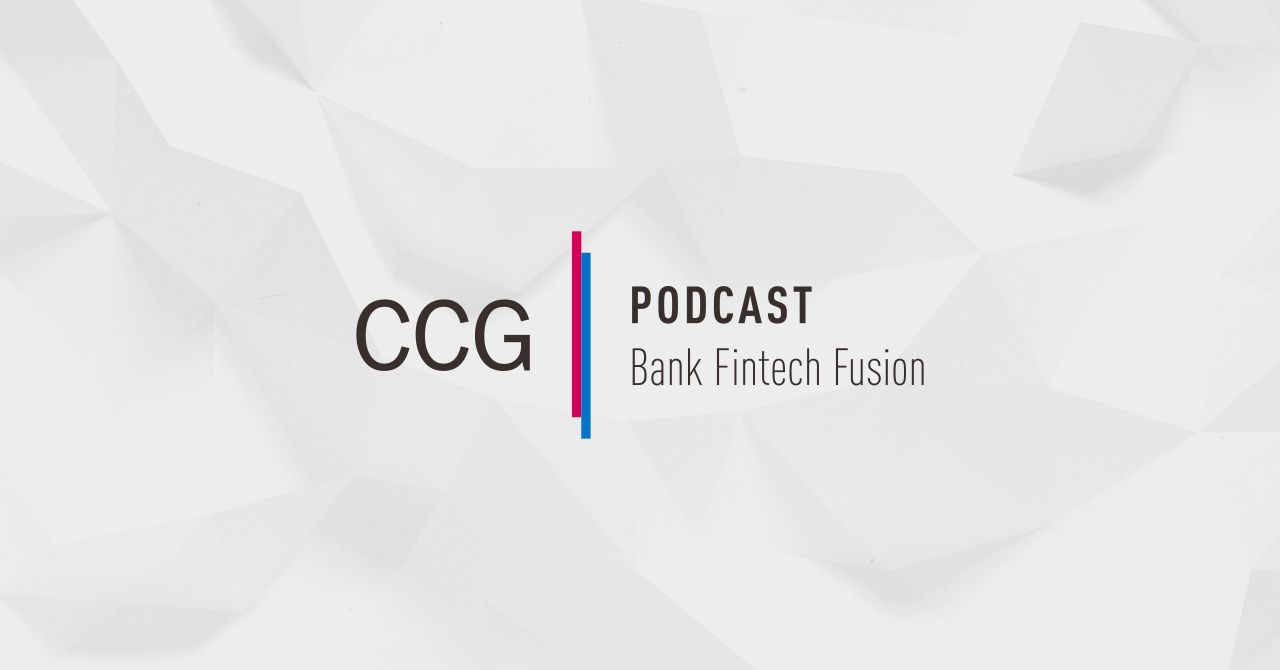Tiana will discuss how to diagnose the health of your business unit by covering three important areas of business: process, risk, and client services. Listen in to understand how to obtain full visibility into your business unit’s scope. Are you executing on everything you are responsible for today? You will be sure to find out.
Podcast: Download (Duration: 9:59 – 10.4MB)
Subscribe: Google Podcasts
Read the full transcript here:
Tiana Brown [00:00:04] Hello, welcome to Bank Fintech Fusion’s second episode of the Bank Operational Alignment series, I’m Tiana Brown, principal at CCG Catalyst, and with me I have Arianna Vallejo, our Digital Production Consultant. Hello, Arianna.
Ariana Vallejo [00:00:22] Hi Tiana, thank you for having me.
Tiana Brown [00:00:23] Yes, of course. In today’s episode, we are going to discuss how to diagnose the health of your business unit by covering three important areas of business process, risk and client services.
Ariana Vallejo [00:00:42] So, Tiana, to start off today’s discussion, what does it mean to gain full visibility into the overall health of your business?
[00:00:50] Well, to gain full visibility into the overall health of an organization means that you seek to find out what is going on as it relates to all processes and procedures that you oversee. This would be a leader going deeper than just the basic concepts of their responsibility. So a typical day may consist of measuring attendance and performance of a team only focused on items such as call intake, number of payments processed, maybe lowest funded or claims resolved. However, there are additional processes that fall within those scopes that must be on the radar for leaders as well. Understanding these functions and whether or not they are being taken care of on the appropriate needs basis is very important. Not to also mention is they follow all compliance and regulatory standards, and that’s a really great place to begin to ensure that you have full visibility into the overall health of your organization.
Ariana Vallejo [00:01:54] That’s very interesting. So can you give us an example of this?
Tiana Brown [00:01:59] Yeah, absolutely. A great example would be a payment operations team. The leader and team members of this team know that they review and process payments for the bank or fintech. However, what are the operational functions that team is responsible for? Some of those details could be confirming bank account information, managing risk, releasing payments, applying payments, resolving issues or even payment research. Then we can take it even a step further if we would want to understand when and how all of these functions are performed advantage. Which are the key drivers of the business, which are the one offs, what are the processes that impact the receiving teams? One of my favorites is the metric related to the performance of each of these functions.
Ariana Vallejo [00:02:54] So is there really any business that is under good or perfect health, and if the answer is yes, what would good to perfect health inside of financial services look like?
Tiana Brown [00:03:05] Well, most banks and fintech would like to say that their business personally is good and perfect. But unfortunately, that’s not the case. A lot of that perception comes from individually measuring what they know personally. But when you look at both banks and fintech broadly and consider changes in process, product or leadership, that alone brings operational alignment opportunities. There are some organizations for sure who do the work in analyzing their processes and procedures on a regular basis. Then there are those that are the if it isn’t broken then we don’t fix it personality types, not to mention those who know there are issues but asking for help would require exposure, which could be very uncomfortable for some. Therefore, things remain the same. Now to your question also to be in good or perfect health, banks and fintech need to be intentional about operational alignment and the efficient operational concepts that support that. As a principal here at CCG, one of my key focuses is supporting Banks and Syntex in establishing those best practices that lead to having an ongoing good bill of health in their business. We work with banks and fintech to help through the process of servicing gaps to help them become operationally aligned. Now, this could be done through a business assessment and possible strategic planning.
Ariana Vallejo [00:04:37] Great, thanks for explaining that. When completing your business process assessment, let’s say for the sake of this podcast, what are some of the things business unit leaders could find?
Tiana Brown [00:04:48] Great question. There are several things that could be exposed, and this would be in relation to the scope in which the bank or fintech were interested in proving. So, for example, if the organization has a new leader, join the team. And possibly that leader was hired as a fresh pair of eyes to ensure that all processes were aligned with the overall organizational goal, CCG would perform a business assessment along the lines of business associated with the scope of the project. Working in financial services, common items that are identified but not limited to could be risk, operational inefficiencies and opportunities for improvement on delivering a better employee and client experience.
Ariana Vallejo [00:05:35] So speaking of risks, what type of risk can be found during a business process assessment within financial services?
Tiana Brown [00:05:43] Some risks that are common within an operational business assessment would be lost if processes are not completed correctly or if employees are not efficient, financial loss is inevitable. Another one would be regulatory, if a bank or fintech operates in the lending or payment space, it is important to have documentation within compliance and regulatory guidelines, not to mention being in alignment with any partners or associated vendors. These are easy things to miss, as they are usually far in the details. These misses are not intentional by the financial institutions, but they do need to be resolved, in fact, and it does not hurt to have a business assessment performed to catch possible oversights.
Ariana Vallejo [00:06:30] What are some gaps that could be found with a banking business process today that can negatively impact the client?
Tiana Brown [00:06:38] At the end of the day, we are all in business for a client and we have to make sure to remember that financial services is so important because we operate in a field where we are dealing with a product that supports what people live and work for, which is money. We create ways for individuals to have more of it or spend it the way they want. Whether you are a bank holding funds for a client or a fintech helping them spend it, we must make sure that the process is seamless. Sometimes that could not go as planned in a baking process perspective, which would be the operational plan for maybe a customer service team. So, for example, is there a flow of receiving a call to handling the call all the way through resolution? Another example could be payment processing. Does your current strategy ensure that there will be no misapply payments? And if there is a margin for error, what is the recovery plan for those instances? These are just a couple of high level situations that would need to be considered to support a positive client experience.
Ariana Vallejo [00:07:52] So it appears that the client experience is not only impacted by those that are on the actual client services team, is this correct?
Tiana Brown [00:07:59] Absolutely not. The back office functions are extremely important. Often this is where the real hands-on work is sent to resolve issues. An example of this would be a request to resolve a client account updater payment. Another reason it’s so important for leaders to understand every single process detail of their business is the reality of not knowing will actually lead to potential email responses unanswered or unresolved clients. This is an avoidable mess, but easy to resolve with reinforcement and documented procedures. So my example of unanswered emails may not seem huge, but that leads to complaints. Complaints lead to impacted client satisfaction scores. It is just best to ensure that you know your process from start to finish. Some flowcharts in your business could be simple and some are more complex, whichever you operate under. Just know that each step should be intentional and handled accordingly.
Ariana Vallejo [00:09:02] Well, this has been very informational, so thank you before we leave today. What do you wish for the audience to take away from this episode?
Tiana Brown [00:09:10] Well, Aryana, today we have discussed how business assessments help banks and fintechs to discover what processes or steps they could be missing, how they can lead to risk exposure, and also how clients are impacted as a result of overlooking process steps. If something from this conversation today makes you want to take a deeper dive into your business operations, please feel free to contact me any time. Thank you for listening to today’s podcast. If you’ve enjoyed this topic and are interested in learning more about the bank operational alignment, please subscribe to our Bank Fintech Fusion Channel. Again, I’m Tiana Brown, Principal at CCG Catalyst, and I’ll see you next time.






